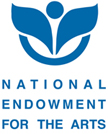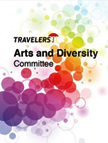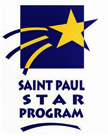Hmong Attire |
|---|
 |
HA41: This is a cotton Hmong man’s hat. It is rather simple, but the blue and black triangles and the pink knot make it a bit more interesting than the more common all-black hats.
By an unknown artist, 1980s-1990s, 27x58 cm in diameter
|
Back to Top |
 |
HA42: This piece represents a collar, a part of attire found only in Hmong women’s clothing. It is a style of called called dab tsho qhos, or elaborate collar. The technique used involved appliqué work. The blue is the first layer, while the red is the second. The edges were folded and stitched. On the red appliqué is a decorative green chain stitch line. This collar was also decorated with white, green, and pink flowers, and white and yellow mountain motifs on the blue appliqué work.
|
Back to Top |
|
HA43: This is an older dab tsho, and relatively simple version. It is probably from the 1970’s. The embroidery techniques used include running stitches and satin stitches. The pink pieces were appliquéd onto the blue background. The yellow, blue, and pink stitches represent flower motifs. By Kou Lor, Laos, 1999, 16x15 cm |
Back to Top |
HA44: This Green Hmong woman’s collar differs from White Hmong collars due to its shape. The spikes along the edges give it a mountain motif. Green Hmong collars typically display appliqué work, rather than hand embroidery. However, this one also features embroidery. The main motif involves a hook, called a nkhawb in Hmong. Hook motifs are the most common motifs in Green Hmong batik and textiles. Other motifs shown includes diamonds and seeds but are displayed just for embellishment.
|
Back to Top |
HA45: This is a Qua Sev. It functions as a belt and is worn on the waist along with Hmong women’s clothes. It was made using reverse appliqué, and appliqué techniques. The reverse appliqués were cut from a cotton fabric into quadrants, and individually stitched onto a pink or green layover cloth. Satin stitches were decorated with flower and seed motifs. Appliqué work serves as a frame for the piece.
By Mai Cha, 1984, 55x10 cm Photo by Xai S. Lor, item at the Hmong Archives |
Back to Top |
HA46: This is a hlab nyiaj, a belt with coins. The coins are fake aluminum discs because this hlab nyiaj was made for girls as opposed to young Hmong women of courting age. Such a belt would typically be decorated with real silver coins, and worn around the waists of both young men and women. It contains synthetic fabrics and cotton with cross-stitch embroidery, aluminum discs, and beads.
|
Back to Top |
HA47: The Hmong people call this bag a Hlab Nyiaj , or money bag. The point in time in which these pieces became part of Hmong attire is unknown. It may date to the 1970s. Pieces including the one shown are typically constructed in reverse appliqué, and often use quarter rickrack, and house motifs. A strap is attached to the money bag. A pair of money bags is often worn by the Hmong of Xieng Khouang province in Laos. Other groups of Hmong from Luang Prabang province have developed their own versions of the money bag typically utilizing the snail motif. The straps are carried on the shoulders and cross onto the chest area and onto the hips. Money bags are usually decorated with French coins, however, this money bag does not include coin decorations. Money bags are often worn by young people at Hmong New Year’s gatherings during the ball tossing sessions.
By Pob Tsuas Lauj, 1981, 21x20 cm Photo by Xai S. Lor, item at the Hmong Archives |
Back to Top |
Page 1 << Page 2 << Page 3 << Page 4 << Page 5 |




